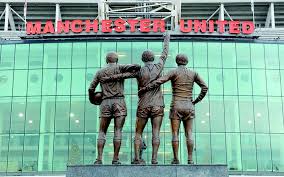By David Owen
September 21 – Manchester United, flying high under José Mourinho at present, have got the new Premier League financial reporting season off to a solid start with a near 16% advance in annual pre-tax profits.
The Old Trafford club posted the biggest profit among competitors in the English top flight last year at £48.8 million, and it would not be surprising if they repeated the feat with the £56.5 million they have generated this time. This was achieved on record revenues of £581.2 million, attained in spite of the absence of Champions League football – a lacuna that the Red Devils’ Europa League triumph has enabled them to rectify this term.
Even though the new Premier League TV deal helped to send broadcasting revenue bounding ahead, operating expenses – at £511.3 million for the year to June 30 – climbed at a faster rate (17%) than overall revenue (12.8%). But player disposals, including those of defender Paddy McNair to Sunderland, Morgan Schneiderlin to Everton and Memphis Depay to Olympique Lyonnais, contributed to a £10.9 million profit on the disposal of so-called “intangible assets”. This compared with a £9.8 million loss in 2015-16, enabling operating profit to rise £12 million to a record £80.8 million.
The latest figures do not include the big-money summer arrivals of one-time Chelsea men Romelu Lukaku and Nemanja Matic, which have done so much to transform the team.
Net finance costs on United’s debt rose appreciably from £20 million to £24.3 million, but net debt dipped 18% to £213.1 million. It was noted, however, that the gross US dollar debt principal remained unchanged. The consolidated balance-sheet at June 30 puts cash and cash equivalents at £290.3 million and borrowings at £497.6 million.
It was stated that the club expects revenue of £575 million-£585 million in fiscal 2018, which would be little changed from the current period. This suggests it may have to rein in cost-growth if profits are to continue to rise.
Unlike most English clubs, commercial revenue was the biggest contributor to overall revenue at £275.5 million. Growth, however, was subdued at 2.7%, with sponsorship revenue up just 1.4% over the prior year at £162.3 million.
Broadcasting revenue totalled £194.1 million, up 38%, while matchday revenue reached £111.6 million, a gain of 4.7%, attributed chiefly to playing two more home games than in 2015-16.
Employees rose quite sharply from 810 to 895, and “employee benefit expenses” from £232.2 million to £263.5 million, “primarily due to an increase in first team salaries”.
Contact the writer of this story at moc.l1751505244labto1751505244ofdlr1751505244owedi1751505244sni@n1751505244ewo.d1751505244ivad1751505244

